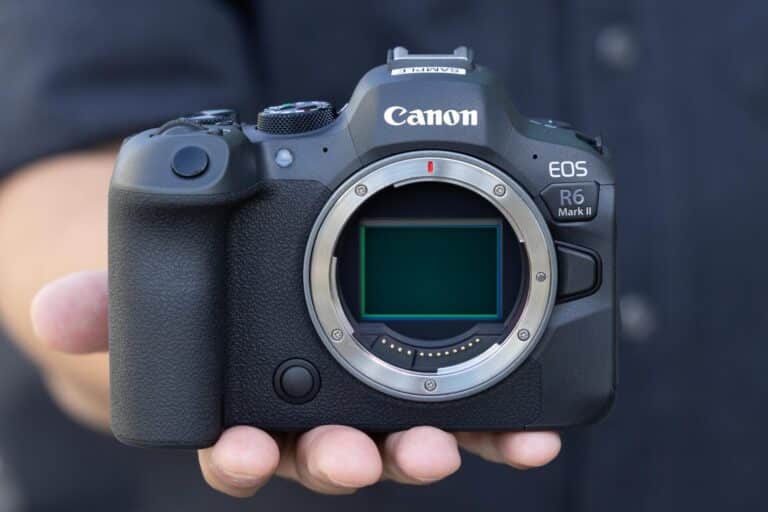What is global shutter: 3 ways it can change photography
The Sony a9 III is the primary full-outline mirrorless camera to be worked around a worldwide screen CMOS sensor, and we question it’ll be the last. So what is worldwide shade and what’s the significance here for photographic artists?
Moderate shades
A worldwide shade is one that catches every one of its pixels all the while. To figure out the potential advantages this brings, it merits grasping the other option: the dynamic screens utilized in most of huge sensor cameras.
Most cameras utilize a mechanical screen component to end their openings, and the larger part utilize one to begin them, as well. Mechanical screens are ordinarily a progression of slight sharp edges that cover the sensor to keep it from getting any extra light, outside the time you need to catch a picture. However, while they move rapidly to begin and end the openness, they’re not moment. This implies that the highest point of the photograph is caught a negligible portion of a second prior to the furthest limit of the photograph. In many occurrences, this has practically no effect, yet there are conditions in which it influences the picture, and this is where worldwide shades enjoy a benefit.
Worldwide screens
The Sony a9 III is the principal ILC to use a Stacked CMOS sensor with a worldwide screen.
There are three fundamental advantages to worldwide screen, all of which connect with circumstances where the scene changes inconceivably rapidly.
The clearest of these is streak photography, where the actual blaze illuminates the scene for just a minuscule part of a second. Indeed, even the quickest mechanical screen will take around 1/250th of one moment to traverse the sensor, so any openness more limited than this requires the second drape of the shade to begin shutting before the first has completely opened. This implies there’s no reason for time where the whole sensor is uncovered, so a solitary blaze of light can’t illuminate the entire picture. This is the glimmer sync speed.
With a worldwide screen this isn’t an issue: the entire sensor is caught at the very same time, so the entire picture will be enlightened by the glimmer, in any event, for the most limited openness. This implies you can involve strobes in their most impressive, single blaze mode, as opposed to depending on fast sync, which attempts to beat or broaden the term of the glimmer.
Practically speaking, this implies a worldwide screen camera can utilize the shade speed to change the foundation splendor of a blaze picture, regardless of whether with short openings. The blaze level and opening will control the openness of the closer view, however you can obscure all the other things in the picture, or keep the foundation from smothering utilizing the shade speed.
Strangely however, at exceptionally short openings you risk something contrary to the issue moderate shades have: rather than expanding the span of the glimmer to oblige a sluggish shade, you risk the openness being excessively short to catch the blaze’s all’s result.
Banding
The second circumstance where a worldwide shade proves to be useful is another where you have short heartbeats of light like in Drove lighting and shows. Driven lights frequently turn on and off rapidly to control their apparent brilliance, while Drove shows glint to show various varieties or brightnesses, or invigorate to show an alternate picture. With an ever-evolving screen it’s feasible to inadvertently catch this glinting example on the grounds that each piece of the picture is catching a marginally unique cut of time. This doesn’t occur with a worldwide screen since it catches a solitary moment. There’s as yet a gamble of the openness evolving, shot-to-shot as the LEDs gleam on and off, however you will not get diverting groups in your pictures.
However, with extremely short openings quite possibly’s Driven showcase boards will seem some unacceptable variety. Driven shows control which variety they show up by making their different shaded components gleam at various rates, so there’s an opportunity you’ll catch a picture at a second when a portion of the components aren’t enlightened, or where you just caught a piece of their flash example.
Twisting
The third advantage of a worldwide screen is that you can’t get misshaped pictures on the grounds that your subject has moved while the shade was opening and shutting. You’ll in any case get movement obscure assuming your openness is excessively lengthy, yet there’s no gamble of development happening during the beginning and end of the openness. This is seldom an issue with mechanical screens: on a basic level, a worldwide shade will keep away from contortion with even the quicker moving subjects, for example, moving rotor edges or a golf swing, however it’s really extraordinary to snap a picture with a mechanical screen and see perceptibly twisted development.
It makes a difference significantly more in video, where cameras commonly utilize electronic screens that read out continuously. Probably the most recent cameras are extremely quick, yet there are a lot of 4K-fit cameras where each edge’s openness takes in excess of quite a bit longer to begin and end than with a decent mechanical shade. This implies there are more sorts of subject movement or camera development that produce apparent mutilation. So video shooters are probably going to see the value in the end of the moving screen impact that a momentary worldwide shade brings.






